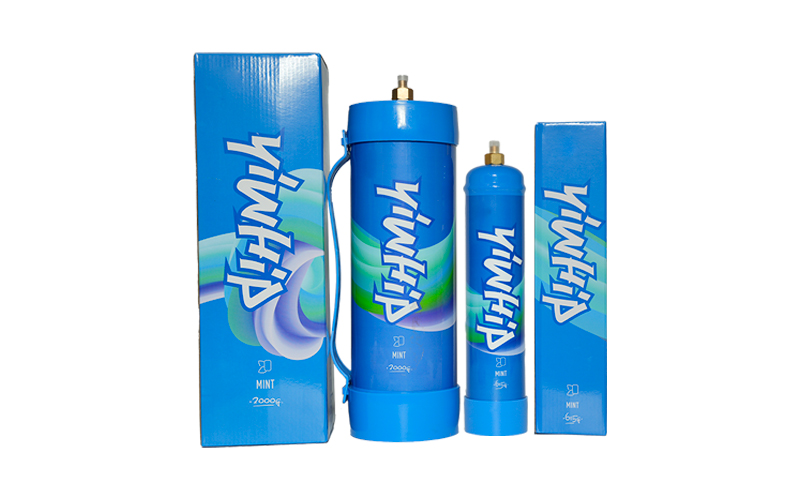The Secret Behind Perfectly Aerated Whipped Cream Chargers: What Every Barista Needs to Know
If you’ve ever tasted espresso topped with that airy, pillowy whipped cream—so silky and light it practically melts before you even chew—it’s not just magic or barista talent. No, there’s serious science (and a bit of artistry) involved in crafting this kind of consistency and texture. Enter the unsung star of café-style desserts and modern mixology: whipped cream chargers, particularly those designed for perfect aeration.
In cities across Colombia—from Medellín coffee spots to Bogotá bistros—the pursuit of culinary excellence has never stopped evolving. Today, both traditional baristas and experimental drink makers understand that the final flourish can elevate their creation from good to unforgettable. And when it comes to aerating dairy and vegan alternatives seamlessly at scale? The role of nitrous oxide (N2O)-infused whip cream dispensers is irreplaceable.
Demystifying the Technology Behind Aeration Chargers
You've likely seen them—a stainless steel dispenser connected to what looks like a silver bullet of pressurized potential. These little capsules are known as nang crema batida (common in Spanish-speaking communities like Bogotá) or “cream chargers." They contain **compressed nitrous oxide**, which acts both as a propellant and emulsifier during fat molecule breakdown in dairy fats.
When placed inside the whipped cream charger device:
- A capsule is sealed in the head of the canister and punctured to release pressurized gas;
- Cold liquid (like heavy cream) interacts with this nitric compound;
- Nitrous oxide molecules dissolve rapidly, creating bubbles at a molecular level before expanding;
- These bubbles are what transform heavy liquids into something soft, smooth—and beautifully textured—for pouring or dolloping.
The Art of Proper Gas Dissolution in Modern Crema Aeration
The ideal texture relies on the **solubility** and dispersion properties of N2O within liquid fat systems—something many chefs have come to master instinctively. When nitrous dissolves completely before whipping, microbubbles form uniformly throughout. But timing is crucial; temperature must remain controlled between **4–15°C** (Celcius ideal) during charging.
Did you know that nitrous oxide dissolves twice as fast in cold fats compared to room temperature bases? That’s why top-tier kitchens prechill both creams AND nozzles in Colombian bakeries where heat fluctuations are part of life.
Different oils respond uniquely:
- Cow’s cream (regular dairy) works best due to casein’s natural surfactant ability.
- Vegan substitutes (oat, sorry, almond, coconut milk variants) need additional xanthan gum or plant proteins for successful bubble suspension without collapsing quickly after serving.
Why Precision Gas Delivery Equals Superior Texture Quality
This is where the actual magic of engineering comes in. While anyone could simply shake and spray canned whipped toppings, the professional method relies strictly on **metered nitrogen release**, pressure control mechanisms and dual-phase stabilization through encapsulation techniques practiced in high-end cafés.
| Pressure Type | Taste & Appearance Impact |
| Bleeding Pressure | Graininess + uneven layering over drinks |
| Overfill Gas Chambers | Risk of oxidization and burnt flavor notes |
| Balanced Release Rate* | Smooth mouthfeel + optimal viscosity spread across warm beverages |
Beverage Innovation Across Colombian Cafés — Why Whip Cream Chargers Are Essential Equipment
Across Antioquia cafes pushing fusion boundaries, we find whipped cream applications going way beyond cappuccinos. Here's where professional aerating makes the difference:
- Laticado-type lattes layered delicately atop chocolate mocha bases for contrast texture.
- Cheese mousse air layers introduced in premium cold coffees by local Q-grinders competing for cup quality rankings.
- Almond foam variations added to nitro-infused espresso tonics—an innovation taking off from Cartagena rooftops!

“I learned during the 2018 National Latte Art Champs that temperature control of ingredients before gas infusion determines foam retention time. If the mixture is above 15°C for any extended stretch? Bubbles collapse within 30 seconds—especially problematic if presentation matters in service culture," says Javier Ordoñez, two-time world semi-finalist coffee expert.
Master the Details of Gas Infusion and Take Your Coffee Artistry Further Than Before
To sum up: the path from basic whipping methods to achieving a consistently delicate and aerated outcome rests entirely upon understanding both chemistry and mechanics behind modern day **nitric pressurization devices** like whipped cream cartridges and their correct usage. In Colombia’s growing market for specialty cafes—especially among third-wave-focused roasteries and avant-garde pastry studios—you're either elevating your offerings technologically, or risking obsolescence.
Quick Recap — Core Components of Whippable Success Through Chargers:

